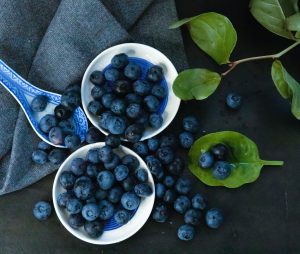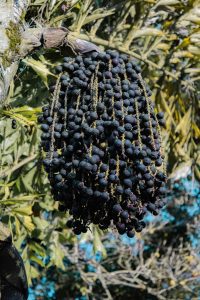
What Is a Tangerine?
A tangerine is a small, citrus fruit known for its bright orange color, sweet and tangy flavor, and easy-to-peel skin. Belonging to the Citrus reticulata species, tangerines are a subgroup of mandarins and are closely related to oranges. The fruit is typically round and slightly flattened, featuring a thin, loose peel that can be effortlessly removed by hand. Tangerines are prized for their juicy and aromatic segments, which are often seedless.
Tangerines offer a burst of vitamin C, providing antioxidant benefits and supporting immune health. They are commonly enjoyed fresh as a snack, in salads, or as a flavorful addition to desserts and beverages. Their refreshing taste and convenient, portable nature make tangerines a popular choice for those seeking a nutritious and delicious citrus experience.
Why Do We Eat Tangerines?
We eat tangerines for several reasons, ranging from their delightful taste and versatility to their nutritional benefits. Here are some reasons why tangerines are consumed:
- Sweet and Tangy Flavor:
- Tangerines have a deliciously sweet and tangy flavor that makes them a delightful and enjoyable snack.
- Convenience:
- Tangerines are easy to peel, and their segments separate effortlessly, providing a convenient and mess-free snack option.
- Citrusy Freshness:
- The juicy and aromatic nature of tangerines adds a burst of citrusy freshness to various dishes, making them a popular choice in salads, desserts, and beverages.
- Snacking:
- Tangerines are a portable and healthy snack option, perfect for on-the-go consumption. Their natural sweetness satisfies cravings while providing essential nutrients.
- Nutritional Benefits:
- Tangerines are rich in vitamin C, an antioxidant that supports the immune system, aids in collagen formation, and contributes to overall health. They also provide dietary fiber and other essential vitamins and minerals.
- Versatility in Culinary Use:
- Tangerines can be used in a variety of culinary applications. Their juice, zest, or segments can enhance the flavor of salads, marinades, sauces, desserts, and beverages.
- Hydration:
- Tangerines have a high water content, contributing to hydration, especially when consumed as a fresh snack or incorporated into beverages.
- Dessert and Garnish:
- Tangerines are commonly used in desserts, such as fruit salads, cakes, and tarts. They also serve as a colorful and flavorful garnish for various dishes.
In summary, the appeal of tangerines lies in their irresistible taste, easy-to-peel nature, nutritional content, and versatility in culinary applications. Whether enjoyed fresh as a snack or creatively incorporated into recipes, tangerines offer a burst of citrusy goodness that appeals to a wide range of palates.
When Do We Eat Tangerines?
Tangerines are a versatile fruit that can be enjoyed at various times and in different settings. Here are some common occasions and times when people often choose to eat tangerines:
- Snacking:
- Tangerines make for a convenient and healthy snack. Their easy-to-peel skin and segmented interior make them a popular choice for a quick and refreshing bite, whether at home, work, or on the go.
- Breakfast:
- Tangerines are a vibrant addition to breakfast. Their sweet and tangy flavor pairs well with yogurt, cereal, or as a side dish, providing a nutritious start to the day.
- Lunchbox Treat:
- Tangerines are a popular inclusion in lunchboxes for both children and adults. Their natural sweetness and juicy texture make them a welcome addition to a packed meal.
- Salads:
- Tangerines add a burst of citrusy freshness to salads. Their segments can be tossed into green salads, fruit salads, or mixed with other ingredients to create a flavorful and nutritious dish.
- Desserts:
- Tangerines can be used in various desserts, such as cakes, tarts, and fruit salads. Their sweet and tangy flavor complements a wide range of sweet treats.
- Beverages:
- Tangerines are often juiced to create refreshing beverages. Tangerine juice can be enjoyed on its own or used as an ingredient in smoothies, cocktails, and mocktails.
- Celebrations and Holidays:
- Tangerines are sometimes associated with festive occasions and holidays. They can be included in fruit baskets, used for decoration, or enjoyed as part of holiday feasts.
- Hydration:
- Tangerines, with their high water content, contribute to hydration. Eating tangerines or drinking tangerine-infused water can be a flavorful way to stay refreshed.
Ultimately, tangerines can be enjoyed throughout the day and in a variety of culinary settings, making them a versatile and delightful fruit for different occasions.
Ingredients of Tangerines
The term “ingredients” is typically associated with processed or prepared foods, and for natural fruits like tangerines, it’s more accurate to discuss their nutritional components. Tangerines are a rich source of various nutrients, and their composition includes:
- Vitamin C:
- Tangerines are abundant in vitamin C, also known as ascorbic acid. This vitamin is an antioxidant that supports the immune system, aids in collagen formation, and promotes skin health.
- Dietary Fiber:
- Tangerines provide dietary fiber, which is essential for digestive health. Fiber helps regulate bowel movements, maintain a healthy gut, and may contribute to weight management.
- Natural Sugars:
- Tangerines contain natural sugars, predominantly fructose. These sugars contribute to the fruit’s sweet taste.
- Water:
- Tangerines have a high water content, contributing to their juiciness and helping with hydration.
- Carotenoids:
- The orange color of tangerines is due to carotenoids, including beta-carotene. Carotenoids have antioxidant properties and are converted into vitamin A in the body.
- Vitamins and Minerals:
- Tangerines contain various vitamins and minerals, including potassium, vitamin A, vitamin B-complex, and small amounts of minerals like calcium and magnesium.
- Phytochemicals:
- Tangerines contain phytochemicals, which are bioactive compounds that have potential health benefits.
It’s important to note that the nutritional content of tangerines can vary slightly based on factors such as the specific variety of tangerine and growing conditions. Consuming tangerines in their natural state allows individuals to benefit from these nutrients without any additional ingredients.
Types of Tangerines
Tangerines encompass a variety of citrus fruits, each with its own distinct characteristics and flavors. The term “tangerine” is often used broadly to include mandarins and mandarin hybrids. Here are some common types of tangerines:
Clementines (Citrus reticulata ‘Clementine’):
- Description:
- Clementines are small, seedless, and easy to peel. They have a sweet and slightly tart flavor.
- Season:
- Typically available from November to January.
Satsumas (Citrus unshiu):
- Description:
- Satsumas are seedless and easy to peel with a delicate, sweet taste. They are often characterized by loose skin.
- Season:
- Harvested in late fall and early winter.
Mandarins (Citrus reticulata):
- Description:
- Mandarins are a broad category that includes various tangerine varieties. They are typically small, sweet, and easy to peel.
- Season:
- Availability varies depending on the specific variety, with some being more common in winter.
Dancy Tangerines (Citrus reticulata ‘Dancy’):
- Description:
- Dancy tangerines are known for their bright red-orange color, distinct aroma, and sweet flavor with a hint of tartness.
- Season:
- Typically available from December to February.
Pixie Tangerines:
- Description:
- Pixie tangerines are small, seedless, and have a very sweet flavor. They are often considered a gourmet or specialty variety.
- Season:
- Typically available in late spring.
Ortanique (Citrus reticulata ‘Ortanique’):
- Description:
- A hybrid of tangerines and oranges, ortaniques have a sweet and tangy flavor, combining the best traits of both parent fruits.
- Season:
- Availability varies.
Fairchild Tangerine:
- Description:
- Fairchild tangerines are small, seedless, and known for their sweetness. They are often enjoyed fresh or used in salads and desserts.
- Season:
- Typically available in late fall and winter.
Sunburst Tangerines:
- Description:
- Sunburst tangerines are medium-sized, easy to peel, and have a sweet and tangy flavor.
- Season:
- Typically available from late fall to early winter.
These are just a few examples of the many tangerine varieties available, and availability may vary by region. Each type of tangerine has its unique flavor profile, and preferences often depend on individual taste preferences and regional availability.
Signs of Ripe, Signs of Raw and Signs of Rotten Tangerines
Signs of Ripe Tangerines:
- Color:
- Ripe tangerines generally have a vibrant and consistent orange color. Some variations in shade are normal, but avoid green tones.
- Firmness:
- Ripe tangerines should feel firm yet slightly yielding when gently pressed. They should not be overly soft or hard.
- Fragrance:
- Ripe tangerines often have a sweet and citrusy aroma. This scent may not be as strong as that of other citrus fruits, but a noticeable fragrance is a positive sign.
- Weight:
- Ripe tangerines feel heavier for their size, indicating juiciness. Pick tangerines that feel dense and substantial.
- Skin Texture:
- The skin of ripe tangerines should be smooth, free from major blemishes or wrinkles. Minor variations in texture are normal.
Signs of Raw or Unripe Tangerines:
- Color:
- Unripe tangerines may have a lighter or more greenish hue. They haven’t fully developed their characteristic orange color.
- Hardness:
- Unripe tangerines will feel hard to the touch and lack the slight give that indicates ripeness and juiciness.
- Weight:
- Unripe tangerines may feel lighter for their size, as they haven’t accumulated as much juice.
- Taste:
- Unripe tangerines can have a more bitter or astringent taste compared to fully ripened ones.
Signs of Rotten Tangerines:
- Discoloration:
- Rotten tangerines may develop dark spots, brown patches, or an overall dull appearance. Discoloration is a clear sign of spoilage.
- Mold:
- Visible mold on the skin is a definite indication of decay. Inspect the tangerines for any fuzzy or discolored patches.
- Softness:
- Rotten tangerines will feel overly soft, mushy, or even slimy when touched. Pressing on them may result in a noticeable indentation.
- Foul Odor:
- Rotten tangerines emit a foul or unpleasant smell, indicating decay or fermentation.
- Leaking Liquid:
- Any liquid oozing from the tangerines is a sign of internal breakdown and spoilage.
When selecting tangerines, opt for those showing signs of ripeness mentioned earlier and avoid those that are overly hard, excessively soft, discolored, or have a foul odor. Proper storage can also help extend the freshness of ripe tangerines.
Summary
Tangerines, a subgroup of mandarin oranges, are cherished for their vibrant flavor, easy-to-peel skin, and versatility. Ripe tangerines exhibit a consistent orange hue, a slightly yielding feel, a sweet aroma, and a dense weight. Their smooth skin adds to their appeal. Unripe tangerines may be lighter, harder, and less fragrant, with a more astringent taste.
Rotten tangerines, identifiable by discoloration, mold, excessive softness, a foul odor, or leaking liquid, should be avoided. Tangerines are enjoyed for snacking, breakfast, salads, and desserts, providing a refreshing burst of citrusy goodness. Rich in vitamin C, fiber, and natural sugars, tangerines contribute to a balanced diet. The various types, including Clementines, Satsumas, and Pixie tangerines, offer unique flavors and characteristics, catering to diverse preferences. Selecting ripe tangerines and proper storage ensure the best quality, making them a popular and nutritious choice for a wide range of culinary experiences.






